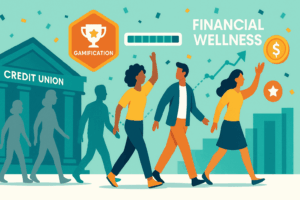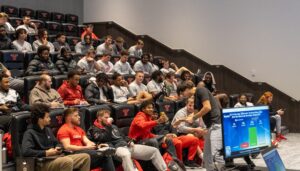This ultimate NYC teacher retirement guide will cover the major benefits you receive as a member of the NYC Department of Education. From the basics of your pension and TDA to understanding how loan forgiveness works and the other benefits you can and must take advantage of as a NYC teacher.
Also check out the NYC Teacher Salary guide if you are a new teacher.
NYC Teacher Retirement Benefits
As a New York City teacher, you have access to some fantastic benefits. However, those benefits you receive differ based on your tenure and the year you joined the DOE. Put simply, understanding what you are entitled to is no simple matter.
Don’t feel disheartened! That’s the reason we’ve created this guide.
We’ll simplify your NYC retirement benefits so you can understand what you are entitled to as a teacher and you can make informed decisions.
Retirement Pension Plan
As a New York City teacher, you are automatically enrolled in the qualified pension plan (“QPP”). This is mandatory for most NYC educators, who cannot opt-out of the pension plan. Exceptions include some CUNY adjunct professors, para-professionals employed by the DOE, and participating charter schools where the pension plan is optional and you must opt-in. Otherwise, participation is indeed required!
How much should you contribute? In your pension contributions are set to between 3% and 6% of your salary automatically, based on annual earnings. This amount will be automatically deducted from your paycheck and no action is required of you.
Below is a chart that outlines what percentage of your paycheck you will contribute to the pension plan.

What Will I Receive In Retirement From My Pension?
Unfortunately, calculating the size of your pension check is a pain in the rear. You’ve got to figure out what tier you are in, your service credit, your age factor then do some averaging of your highest-earning years and multiply it all up. Then you hope you didn’t screw it up!
To make things simple, you can use this calculator and this step-by-step guide to determine your pension inputs.
First and foremost if you do not reach 10 years of service with the NYC Department of Education then this is a moot point. You have to reach that 10-years of service threshold in order to “vest” in the qualified pension plan.
Vest in this case means that you qualify for the pension benefit. If you leave the NYC DOE before reaching that 10-year mark you have 7 years where you can leave your funds in the pension and TDA. Additionally, if you return to the NYC DOE within those 7 years you pick up where you left off. If you do not return in that 7-year window, your contributions will be returned to you.
It’s important you move those into an Individual Retirement Account (IRA) to avoid paying taxes on the money. You can see our breakdown of IRA providers to find the right fit for you.
Your tier is determined by the start date of your employment by the NYC Department of Education. For example, if you joined the NYC DOE on or after April 1st, 2012 then you are in Tier 6 which means you get the least generous pension benefits. Learn more about Tier 6 benefits here.
TDA or Tax Deferred Annuity Program
An additional retirement benefit you are entitled to is the Tax Deferred Annuity (TDA). Unlike the QPP, you must sign-up for the TDA.
The TDA offers another tax-avantaged method for you to save for retirement. By signing up for the TDA, you are able to make pre-tax contributions towards your retirement. This means you will not pay tax on that money until you make withdrawals from your TDA during retirement.
Action: Sign-up for the TDA as soon as you can. Even if you are not able to contribute a lot, contributing something towards retirement is better than nothing. Then consider signing up for the Acquire Then Retire challenge that will help you determine the right contribution amount.
You can use this TDA calculator to see how much money will come out of your paycheck at different percentages. You’ll notice that because you are contributing money before taxes your after-tax paycheck drops less than you’d think.
The tax deferred annuity is offered under a 403(b) account type which is similar to a 401(k) plan. You can learn what a 403(b) account is in our step-by-step 403(b) guide.
Roth or Traditional Individual Retirement Account (IRA)
The third retirement benefit you can take advantage of is setting up your own Roth IRA or traditional IRA. These accounts you get to choose which provider you use and you control this no matter what the NYC DOE or UFT decide.
If you are taking advantage of both the TDA and QPP it is worth setting up an IRA or Roth IRA to really maximize the retirement benefits you receive.
It is important to have your own retirement accounts for several reasons. For example, the union and DOE could change their rules or the pension fund could run out of money. Or something completely out of your control could mess up your retirement cushion. Having your own retirement account that is separate adds an extra layer of safety to your nest egg.
The current total combined contribution limit for a Roth IRA & Traditional IRA are $6,000 or $7,000 if you’re aged 50 years or older. You can confirm this on the IRS website.
Roth IRA
A Roth IRA is a retirement account that you contribute to with after tax dollars. The advantage is that any gains you have are not taxed. This means you pay tax now but your investments grow tax free. Many in the personal finance space recommend using a Roth account because of this.
For a demonstration of the tax advantages of Roth accounts, check out our Retirement Investing Guide.
Roth IRAs are only available to people who make less than a certain amount of money. You can see this year’s requirements for a Roth IRA on the IRS website.
Traditional IRA
A traditional IRA is a retirement account that you contribute to with before tax dollars and defer paying tax into the future. You lower your tax burden in the immediate term and kick the can down the road for when you withdraw the money.
This functions similarly to your TDA except you control the account and what investments you choose.
Accessing Your Retirement Money
While it is generally best to avoid accessing your retirement money early, there are times where you may want or need to. There are four ways to access your retirement money: through an early withdrawal (not advised!), a loan, a hardship distribution, or when you reach retirement age!
Early withdrawal
This is the worst way to access your retirement funds early and should be avoided if possible.
If you pull money out of your retirement accounts early you will end up with a hefty tax bill and a 10% penalty for an early withdrawal. This is a very expensive way to access your retirement funds and should be a last resort!
Luckily there are ways to access your retirement money without incurring fees and taxes.
A TDA Loan or a Pension Loan
One great way to access funds in your TDA or QPP before retirement is a loan. What is great about a TDA loan is that while the interest rate is higher, you are the bank! This means you pay interest to yourself versus someone else.
You can loan up to $50,000 from your TDA or QPP. The total amount you are allowed to loan yourself ranges from 50% to 75% of account value, depending on your tier and which program you use.
As referenced earlier with a TDA loan, you borrow funds from your own personal TDA account. Your TDA balance is lowered when you receive the loan, and your payments go back to your TDA account. Thus making you the bank.
This is not the case with a QPP loan. In the case of a QPP loan, you are actually borrowing against the city’s pension funds and are repaying the city. Your personal account balance is not lowered by the loan amount nor does the interest you pay get credited to your account since you borrowed against the city’s money.
Loan Terms
The current interest rate as of this writing is 6% for a QPP Loan and 7% for a TDA Loan. Payments are automatically deducted from your paycheck starting at 2% of your pay and a one-time service fee of $30 applies at origination. There is also an insurance fee tacked onto each payment of 0.1%, in case you pass away before the loan is repaid.
If you leave the NYC Department of Education voluntarily or you are terminated you have 30 days to repay the balance of the loan in full. If you do not then it will be deemed as a distribution that will incur a 10% penalty and be taxed as income.
You can learn more about the QPP Loan and TDA Loan.
Hardship Distribution
The third way you can tap into your retirement account early is through a hardship distribution. Typically this is used when buying a primary residence and you can prove you have no other alternative.
A hardship distribution still requires you to pay tax on the money you withdraw but the 10% penalty is waived.
This method is not advised if it can be avoided.
You Hit Retirement Age
The last way to access funds is through retirement! You have to be at least 55 to start receiving pension distributions and 59½ for the TDA and IRA. Though it is likely you will want to delay accessing those funds right away. Delaying access to the pension results in higher payouts up to a certain age and investments left in your TDA & IRA can continue to compound.
Use the Qualified Pension Plan calculator to determine when to draw down your pension.
If you reach the age of 72 and have yet to access your retirement funds you may be forced to access the money through required minimum distributions (RMD). You can learn more about required minimum distributions here.
Conclusion
This Ultimate NYC Teacher Retirement Guide will help you, a NYC educator, take advantage of all of the retirement benefits you are afforded. You spend so much time helping students and parents learn and grow. But it is just as important to make sure you are taken care of yourself. Use the QPP, TDA, and individual retirement accounts to set yourself up to live well in the future.
We encourage you to join Ostrich and connect with other teachers who are working towards their financial goals. Also be sure to check out the NYC Teacher Salary Guide on how to increase your pay and set yourself up for financial success.














